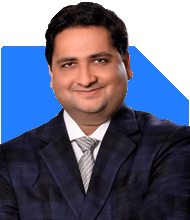Omkeshwar Singh | Answer |Ask -Follow
Head, Rank MF - Answered on Sep 08, 2021

I am 41 and working in a private organisation. I have started investing in MFs since the last three years.
Please find below my investment portfolio. Request your valuable advice.
| Product Name | SIP/PM | Purchase Value |
| 1. Axis Flexi Cap Fund Regular Growth | Rs 2,000 | Rs 87,000 |
| 2. Aditya Birla Sun Life Equity Fund Regular Growth | Rs 2,000 | Rs 87,000 |
| 3. HDFC Mid-Cap Opportunities Fund Regular Growth | Rs 2,000 | Rs 87,000 |
| 4. Nippon India Small Cap Fund, Regular Growth | Rs 2,000 | Rs 92,000 |
| 5. ICICI Prudential Value Discovery Fund, Regular Growth | Rs 2,000 | Rs 87,000 |
| 6. HDFC Low Duration Fund, Growth (formerly HDFC Cash Management Fund -- Treasury Advantage Plan) | Rs 5,000 | Rs 20,000 |
| 7. HRERP/Retirement Savings Equity Regular GR | Rs 5,000 | Rs 20,000 |
| 8. Kotak Flexi Cap Fund, (G) Regular | Rs 1,300 | Rs 27,300 |
| 9. Aditya Birla Sun Life Pure Value Fund, Regular Growth | Rs 1,200 | Rs 18,000 |
| 10. L&T Midcap Fund, (G) | Rs 1,200 | Rs 25,200 |
| 11. Franklin India Feeder Franklin US Opportunities Fund, (G) | Rs 1,300 | Rs 7,200 |
| Product Name | Purchase Value |
| 1. SBI Flexicap Fund-Dir Gr | Rs 20,000 |
| 2. SBI Large & Midcap Fund Direct Gr (formerly SBI Magnum Multiplier Fund) | Rs 20,000 |
| 3. SBI Magnum MidCap Dir Fund-G | Rs 20,000 |
| 4. SBI Blue Chip Fund -- Direct Plan, Growth | Rs 5,000 |
| SBI Magnum Constant Maturity Fund Direct Growth | Rs 5,000 |
Keep the lumpsums invested.
You may like to see similar questions and answers below
Omkeshwar Singh | Answer |Ask -Follow
Head, Rank MF - Answered on Feb 16, 2022
Hardik Parikh | Answer |Ask -Follow
Tax, Mutual Fund Expert - Answered on Apr 07, 2023
Hardik Parikh | Answer |Ask -Follow
Tax, Mutual Fund Expert - Answered on Apr 20, 2023
Ramalingam Kalirajan |10906 Answers |Ask -Follow
Mutual Funds, Financial Planning Expert - Answered on Apr 12, 2024
Ramalingam Kalirajan |10906 Answers |Ask -Follow
Mutual Funds, Financial Planning Expert - Answered on Jul 24, 2024
Ramalingam Kalirajan |10906 Answers |Ask -Follow
Mutual Funds, Financial Planning Expert - Answered on Dec 19, 2025
Nayagam P P |10859 Answers |Ask -Follow
Career Counsellor - Answered on Dec 19, 2025
Ramalingam Kalirajan |10906 Answers |Ask -Follow
Mutual Funds, Financial Planning Expert - Answered on Dec 19, 2025
Ramalingam Kalirajan |10906 Answers |Ask -Follow
Mutual Funds, Financial Planning Expert - Answered on Dec 19, 2025
Ramalingam Kalirajan |10906 Answers |Ask -Follow
Mutual Funds, Financial Planning Expert - Answered on Dec 19, 2025
Radheshyam Zanwar |6751 Answers |Ask -Follow
MHT-CET, IIT-JEE, NEET-UG Expert - Answered on Dec 19, 2025
Radheshyam Zanwar |6751 Answers |Ask -Follow
MHT-CET, IIT-JEE, NEET-UG Expert - Answered on Dec 19, 2025
Samraat Jadhav |2514 Answers |Ask -Follow
Stock Market Expert - Answered on Dec 18, 2025
Reetika Sharma |432 Answers |Ask -Follow
Financial Planner, MF and Insurance Expert - Answered on Dec 18, 2025
Reetika Sharma |432 Answers |Ask -Follow
Financial Planner, MF and Insurance Expert - Answered on Dec 18, 2025


























